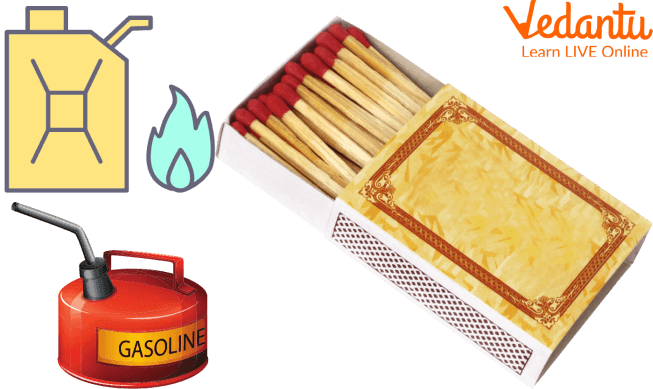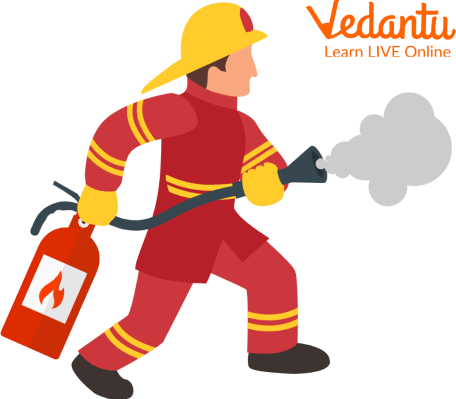




What are Combustible Materials?
A combustible material is something that can be easily ignited and burned. When exposed to fire or heat, a combustible material will ignite, burn, sustain combustion, or emit flammable gases in the form which is utilised under certain conditions. Combustible materials include wood, paper, rubber, and plastics.
Here we will discuss flammable vs inflammable materials. You will get a quick overview of flammable and inflammable materials, how to identify combustible materials, and the importance of these materials.
Flammable Materials
Flammable materials are those that catch fire readily. Some examples like matches and lighters are flammable material.

Flammable Materials
Risks of Flammable Materials
Indeed, even tiny amounts of combustible fluid fumes might light up and cause serious injury and harm, particularly when the vapours gather in inadequately ventilated rooms or shut holders, they might explode. Critically, changes in temperature and pressure can influence the properties of combustible or flammable substances. One litre of combustible fluid- when completely vanished, may create 5,000 litres of a hazardous fume/air blend, enough to fill up a little store room or carport.
Inflammable Materials
Inflammable substances are those substances that burst into flames effectively, and their ignition temperature is extremely low. Instances of inflammable substances are liquor, petroleum, melted oil gas, etc. Inflammable is a French word that signifies "to burn down". Inflammable substances are otherwise called burnable or combustible substances. Inflammable substances are exceptionally directed and are extremely perilous.
Properties of Inflammable Substances
Inflammable substances have extremely low flash points.
They are exceptionally vulnerable to flames.
Inflammable substances have higher fume strain because of which flash point diminishes and combustibility increment in inflammable substances are exceptionally flammable.
The main example of an inflammable substance is coal which is by, and large found as sedimentary rocks and is essentially utilised in creating intensity and light. It is a natural compound that comprises carbon and hydrogen bonds.
Examples of inflammable substances are acetones, firecrackers, benzene, propane, zinc powder, blowtorch, butane, condensed oil gas, petroleum, magnesium, lamp oil, etc. Inflammable substances are unsafe in various circumstances as bunches of materials are combustible and burst into fire. Safety precautions are necessary while using these things.

Inflammable Materials
Flammable Vs. Inflammable Materials
Here we will discuss the differences between flammable and inflammable materials to clear this out.
Summary
The degree of flammability or combustibility in air depends largely upon the volatility of the material, this is related to its composition-specific vapour pressure, which is temperature-dependent. The quantity of vapour produced can be enhanced by increasing the surface area of the material, forming a mist or dust.
Here, we learned about inflammable materials, flammable materials, and which materials are flammable. Flammable materials are those materials that catch fire easily. Some examples include coal, kerosene, etc. Inflammable materials are those which do not catch fire easily. Some examples are glass, water, etc. Flammable vapours are emitted by flammable materials.
FAQs on Which Materials are Flammable?
1. Which materials are flammable out of the given materials: Gasoline, Helium Gas, Nitrogen, Kerosene, Propane, and Coal?
The flammable materials are the following: Gasoline, Kerosene, and Propane.
2. Why is flammability important?
Knowing the flammability of a chemical or a material is very important for its storage and transport. Strict measures shall be taken to prevent fire from materials likely to set fire.
3. What is the most flammable material?
Chlorine Trifluoride is the most flammable gas of all the dangerous chemical gases; chlorine trifluoride is known to be the most flammable. It is a colourless and extremely reactive gas that can burn through concrete and gravel.









